Often mistaken for one another given their prevalence in natural and populated areas, there are some significant differences between goldenrod vs ragweed. But what might some of these differences be, and how can you learn how to tell these two plants apart? They are both from the same plant family, so they have some undeniable similarities. But what about their differences?
In this article, we will compare and contrast goldenrod with ragweed so that you can fully understand the differences between these two plants. We will go over what they look like so that you can identify them in the wild, as well as what they are typically used for. Finally, we will give you some information as to what typically happens when humans interact with these plants. Let’s get started now!
Comparing Goldenrod vs Ragweed
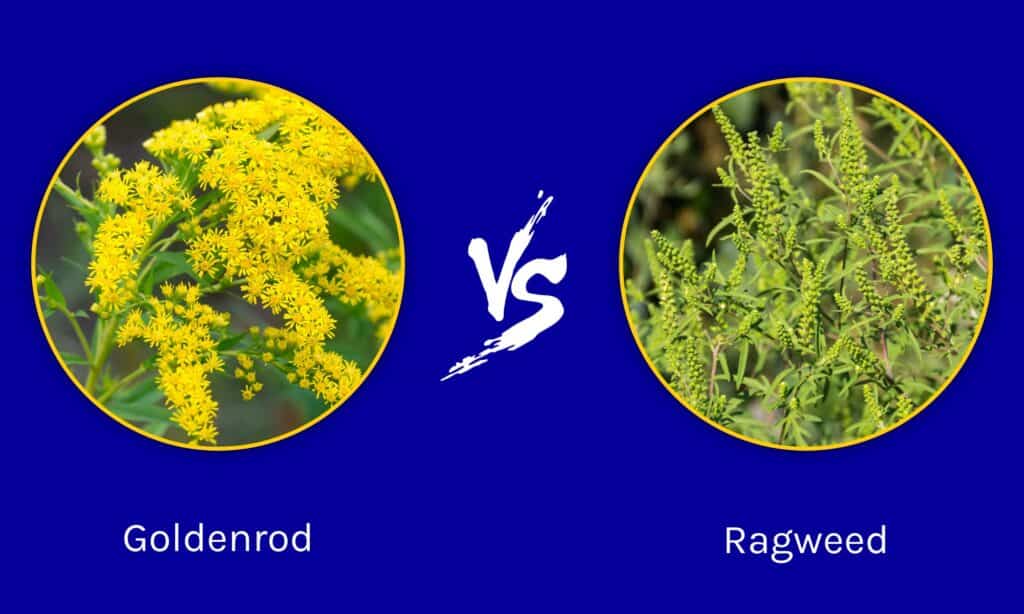
| Goldenrod | Ragweed | |
|---|---|---|
| Plant Classification (Family and Genus) | Asteraceae family; Solidago genus | Asteraceae family; Ambrosia genus |
| Description | Ranges in height and characteristics, depending on the specific plant variety. Reaches anywhere from 6 inches to 4 feet in height, with woody stems and beautiful yellow blooms. Flowers typically look like daisies or dandelions, with serrated leaves | Ranges in height from 6 inches to over 10 feet tall, with unique leaves and stems that rise high above its leaves to produce flowers. These flowers are typically white or purple, with petite blooms that grow in an orderly fashion along the stem. More plantlike than woody as it grows, though some shrub varieties exist |
| Uses | Important pollinator and food source for butterflies, but also a great ornamental plant. Also used in rubber production and for some medicinal benefits | Primarily viewed as an allergy-causing weed, but may have some medicinal benefits including disinfectants and help with stomach ailments |
| Origin and Growing Preferences | Primarily native to North America and Mexico; very hardy and easy to grow from seed, preferring full sun | Native to North America, particularly the southwestern States; a sturdy weed that grows from a taproot, making it difficult to get rid of once planted |
| Interaction with Humans | Can cause an allergic reaction if handled, but does not cause seasonal allergies | One of the main causes of seasonal allergies, given its small pollen size and ability to pollinate using the wind |
Key Differences Between Goldenrod vs Ragweed
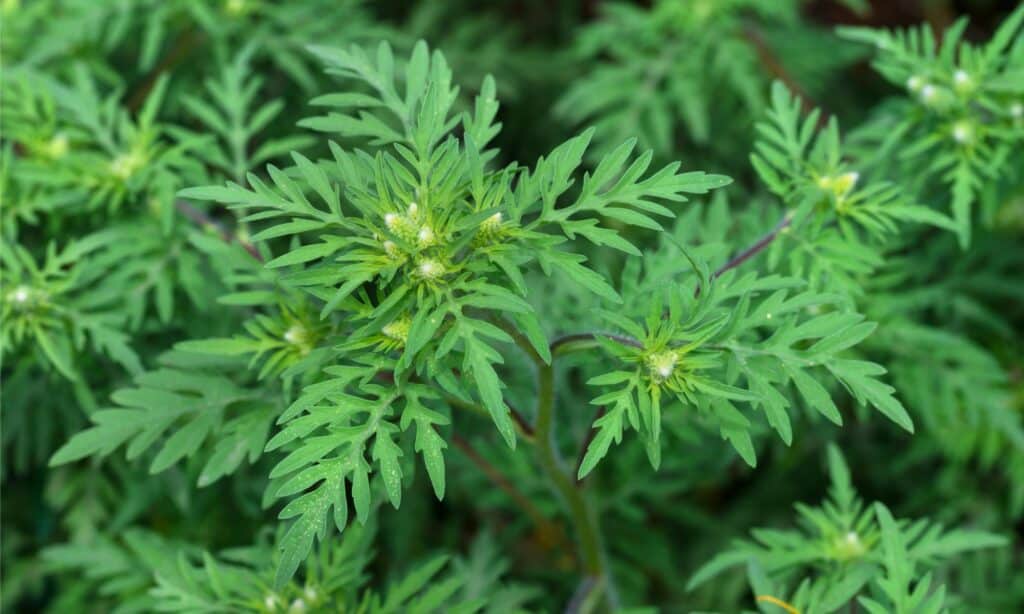
Ragweed plants can grow much taller than goldenrod plants.
©iStock.com/Oskanov
There are a number of key differences between goldenrod and ragweed. For example, goldenrod and ragweed belong to different plant genuses from each other. Ragweed plants can grow much taller than goldenrod plants. The flowers found on goldenrod plants are distinctly yellow and showy, while ragweed flowers are much smaller and rarely ever yellow. Finally, ragweed is a common plant when it comes to causing seasonal allergies, while goldenrod is a wildflower and less likely to cause allergies.
Let’s go over all of these differences in more detail now.
Goldenrod vs Ragweed: Classification
There are some undeniable similarities between goldenrod and ragweed. This likely lies in the fact that they are from the same plant family. Both of these plants are from the Asteraceae or Daisy family, but they are from two distinct genuses from each other. For example, goldenrod is from the Solidago genus, while ragweed is from the Ambrosia genus.
Goldenrod vs Ragweed: Description
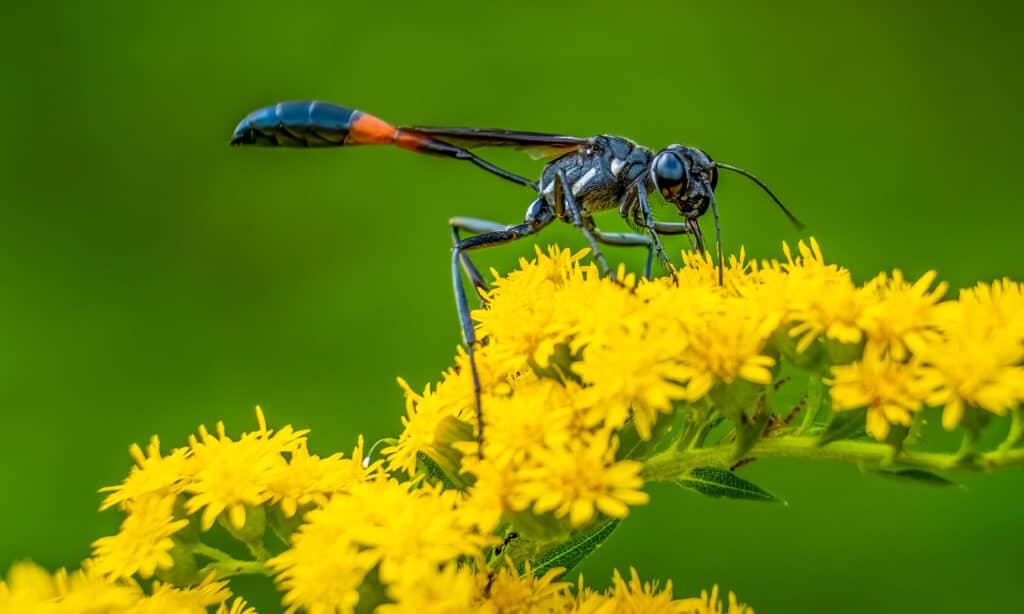
Goldenrod leaves are typically serrated or deeply veined, while ragweed leaves are scalloped or rounded by comparison.
©samray/Shutterstock.com
If you happen upon either goldenrod or ragweed in the wild, you can use a few different things to tell them apart. For example, most goldenrod varieties have a woodier appearance compared to ragweed plants. In addition, goldenrod leaves are typically serrated or deeply veined, while ragweed leaves are scalloped or rounded by comparison. Ragweed plants also have a larger concentration of leaves at the base of the plant, with stems stretching high above these leaves, and goldenrod plants maintain a fullness to their appearance at any height.
The primary difference between goldenrod and ragweed lies in their flowers. Both of these plants are in bloom at the same time, which is why goldenrod is often blamed for the allergic reactions frequently caused by ragweed. However, goldenrod has distinct yellow blooms that occur across the entire plant, while ragweed flowers are white or purple by comparison. These blooms stretch up and down the tall stems found on ragweed plants, while goldenrod plants typically produce more flowers overall.
Goldenrod vs Ragweed: Uses
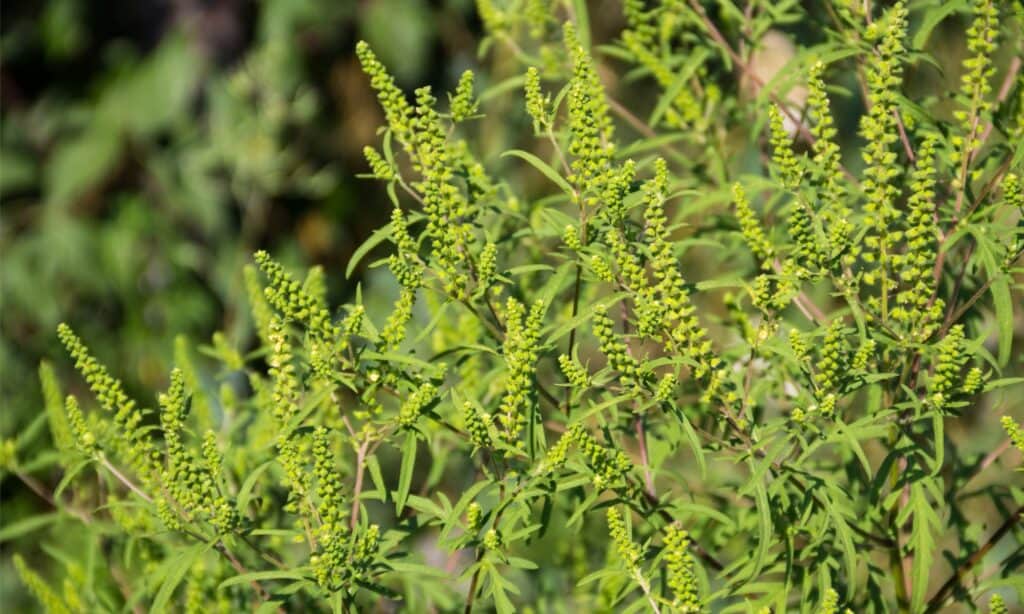
Goldenrod has distinct yellow blooms that occur across the entire plant, while ragweed flowers are white or purple by comparison.
©iStock.com/OlyaSolodenko
The uses of ragweed and goldenrod are very different from each other, given the fact that goldenrod is largely considered a wildflower, while ragweed is considered a weed. For example, goldenrod plants are ideally planted for pollinators, especially butterflies, while ragweed is an invasive plant and rarely ever planted on purpose. However, both goldenrod and ragweed offer some medicinal benefits, though more studies need to be performed to confirm their effectiveness. Interestingly, goldenrod has rubber present in its composition, while ragweed does not.
Goldenrod vs Ragweed: Origin and How to Grow
Goldenrod and ragweed have some similarities in the way that they grow and where they originated from. For example, goldenrod originated in North America and Mexico, while ragweed also originated in North America, particularly the Southwest. In addition, ragweed and goldenrod both grow extremely easily from seed. However, goldenrod prefers full sun, while ragweed grows without fail using its elaborate taproot system.
Goldenrod vs Ragweed: Interactions with Humans
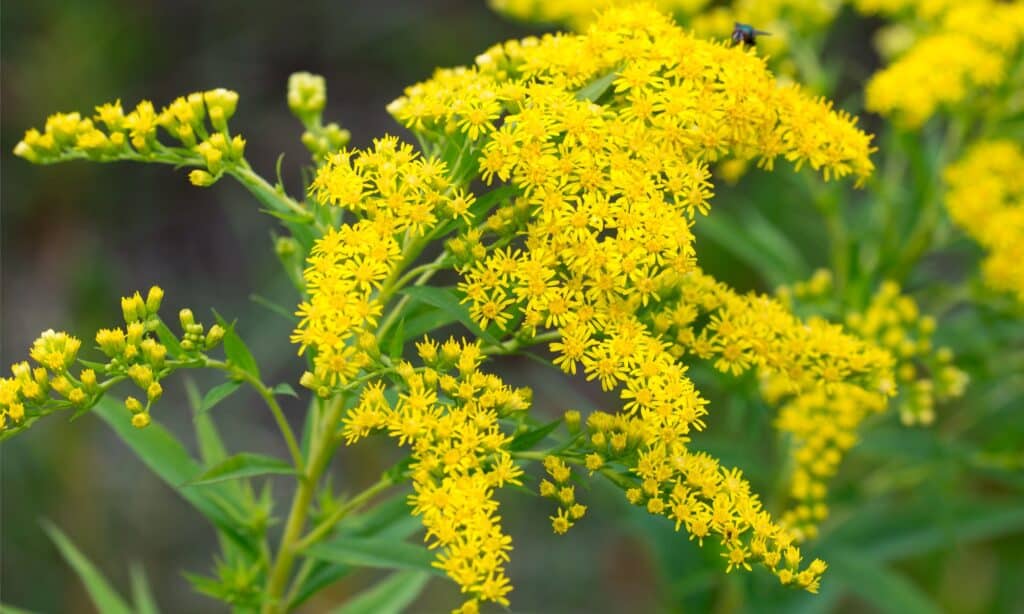
Goldenrod plants are ideally planted for pollinators, especially butterflies, while ragweed is an invasive plant and rarely ever planted on purpose.
©iStock.com/aga7ta
A final distinct difference that should be made between goldenrod and ragweed is how they interact with humans. While both of these flowers bloom at the same time, ragweed is notorious for causing seasonal allergies in nearly 20% of people, but goldenrod does not cause allergies from wind disturbances alone. However, goldenrod may cause allergic reactions in people that choose to handle it, so always proceed with caution when handling any unknown plant!
The photo featured at the top of this post is © iStock.com/Oskanov
Sources
- Rubber Content of Various Species of Goldenrod, Available here: https://books.google.com/books?hl=en&lr=&id=2cNFAQAAIAAJ&oi=fnd&pg=PA149&dq=goldenrod+rubber&ots=IRDr44xUXU&sig=WzIjkoKpLf2ZwMyZ29j_j3BKVyc#v=onepage&q=goldenrod%20rubber&f=false
- Ragweed allergy: Pollen count and sensitization and allergy prevalence in two Italian allergy centers, Available here: https://journals.sagepub.com/doi/abs/10.2500/ar.2015.6.0141
Thank you for reading! Have some feedback for us? Contact the AZ Animals editorial team.






